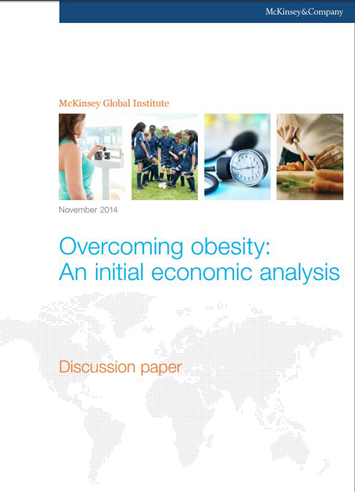Fat’s Heavy Burden On The World Economy
By Jomo Kwame Sundaram | Last updated: May 10, 2016 - 12:36:04 PMWhat's your opinion on this article?

|
KUALA LUMPUR, Malaysia (IPS)—About 2.1 billion people are regarded as overweight or obese today, or almost 30 percent of the world’s population. With over 800 million people estimated to be chronically hungry in the world, it appears that the number overweight is more than 2.5 times the number of undernourished.

|
The last estimate from the WHO was around 1.5 billion overweight, with a third of them obese. This implies an increase of about 40 percent over just a few years. In the UK alone, for instance, 37 percent of the population is deemed overweight and a quarter obese.
Economic burden

|
The estimates of losses include lost economic productivity, additional healthcare costs and investments needed to mitigate and cope with its impacts. The burden thus ranks together with the economic costs of armed conflict, war and terrorism and of smoking, both estimated at $2.1 trillion each.
Not only fat cats are fat
While once associated in the popular imagination and caricatures with the “fat cat” rich in rich Western societies, the problem has affected lower income communities there disproportionately more. In recent decades, the scourge has been spreading rapidly in most developing countries, especially those deemed better off or middle income, mainly due to lifestyle and associated activity and dietary changes.
Led by the WHO, the United Nations now recognizes obesity as an epidemic connected to various diet-related non-communicable diseases, including Type-2 diabetes, various cancers and cardio-vascular diseases. About 2.8 million deaths yearly are attributed to excessive body weight.
Comprehensive interventions necessary
The McKinsey Institute report and WHO figures significantly strengthen the case for stronger political commitment, more concerted and concerted policy approaches as well as greater international cooperation to address malnutrition in all its forms, namely hunger, micronutrient deficiencies and lifestyle-related non-communicable diseases, largely associated with obesity.
The report makes a strong case for a comprehensive intervention strategy of sufficient scale, recognizing that any single “silver bullet” intervention is unlikely to have sufficient impact. It considered 74 measures taken to address the problem of obesity before making its own recommendations. These include smaller fast food servings, restricting food and beverage advertising and promotion, improving information and education for consumers, especially parents, ensuring balanced, diversified and healthy meals at school and workplaces, reformulating processed foods, and requiring more exercise at school.

Obese children eating at McDonald’s. Photo: MGN Online
|
In early 2014, WHO halved its recommendation for sugar consumption from 10 percent of an adult’s daily calorie intake to five percent—in the face of considerable resistance from adversely affected corporate interests and their government backers. The latest U.S. dietary guidelines recently adopted the previous WHO guideline on sugar intake—a long overdue step in the right direction.
On a more encouraging note, after heading the world obesity league tables for some time, childhood obesity in the U.S. was reduced by 43 percent over the decade 2004-2013 suggesting that the world’s fastest growing pandemic can be reversed. This suggests that all is not lost, and that determined and concerted efforts can help reverse the spread of this new curse of excess.
INSIDE STORIES AND REVIEWS
-
-
About Harriett ... and the Negro Hollywood Road Show
By Rabiah Muhammad, Guest Columnist » Full Story -
Skepticism greets Jay-Z, NFL talk of inspiring change
By Bryan 18X Crawford and Richard B. Muhammad The Final Call Newspaper @TheFinalCall » Full Story -
The painful problem of Black girls and suicide
By Charlene Muhammad -National Correspondent- » Full Story -
Exploitation of Innocence - Report: Perceptions, policies hurting Black girls
By Charlene Muhammad -National Correspondent- » Full Story -
Big Ballin: Big ideas fuel a father’s Big Baller Brand and brash business sense
By Bryan Crawford -Contributing Writer- » Full Story






 Click Here Stay Connected!
Click Here Stay Connected!








